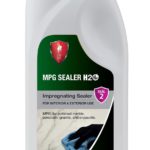Maximize Your Blog’s Impact with Expert Image Optimization Techniques
Images are more than mere embellishments; they serve as vital components that can dramatically enhance the efficacy of your blog. In an era saturated with content, mastering image optimization for SEO has become an indispensable skill for every blogger. Well-optimized images not only improve user experience but also boost search engine rankings and amplify engagement across various social media channels. In this article, we will explore the compelling reasons why incorporating image optimization into your blogging strategy is essential, ensuring you attract visitors and keep them captivated with your content.
Boost User Engagement through Strategic Image Optimization Techniques

Have you ever faced the irritation of clicking on a blog post that loads exceedingly slowly? It’s incredibly frustrating, isn’t it? One of the most substantial benefits of optimizing images is its profound impact on page load times. By effectively compressing and resizing images, you enable them to load promptly, fostering a smooth navigation experience for your audience. This seamless interaction not only maintains reader engagement but also minimizes bounce rates, encouraging users to delve deeper into your content. A website that loads quickly not only retains visitors but also elevates their satisfaction, making them more likely to return in the future.
A remarkable user experience hinges not just on speed but also on the quality of visuals. High-resolution images can transform your blog into a visually captivating platform, seizing readers’ attention and compelling them to engage more with your content. Think about how often you’ve left a website that felt cluttered or unprofessional. By integrating clear and striking images, you not only sustain visitor interest but also enhance their overall experience, significantly increasing the likelihood of repeat visits. Ultimately, the quality of your visuals can forge lasting impressions on your audience, solidifying your brand’s credibility.
Moreover, improving page speed via image optimization substantially enhances accessibility. Users with slower internet connections or those accessing your blog on mobile devices will reap considerable benefits from optimized images. By prioritizing performance, you cater to a diverse global audience, ensuring everyone can enjoy your content regardless of their circumstances. Essentially, optimizing images serves dual purposes: it enriches user experience while ensuring your site remains universally accessible. This approach is mutually beneficial for both you and your audience.
Boost Your Search Engine Rankings with Effective Image Optimization Strategies
Did you know that search engines like Google consider image optimization when assessing site rankings? Well-optimized images not only add context to your content but also assist search engines in understanding the overarching theme of your blog. By adhering to best practices for image SEO, you increase your chances of attaining higher positions in search results, leading to improved visibility and organic traffic—a fundamental aspect of any thriving blog.
Incorporating descriptive filenames and alt text is crucial in this optimization journey. Instead of using a generic filename like “IMG12345.jpg,” choose a descriptive alternative like “how-to-optimize-blog-images-for-seo.jpg.” This approach provides essential context regarding the image’s content to search engines, enhancing their ability to index your images effectively. This level of detail is particularly significant in a global marketplace, where users might search for information in various languages and contexts. Including relevant keywords in your filenames guarantees that search engines can accurately index your images, thus improving your blog’s discoverability.
Additionally, optimized images can lead to heightened user engagement on your blog, contributing to lower bounce rates and extended dwell time. Search engines interpret these behaviors as indicators of high-quality content, which can further boost your rankings. By focusing on how to optimize blog images for SEO, you are laying a robust foundation for your blog’s success in search engine results, attracting more visitors to your platform.
Enhance Social Media Engagement with Captivating Visual Content
In today’s social media-centric landscape, an eye-catching image can be the decisive factor that sets apart a viral post from one that fades into obscurity. Optimized images are significantly more likely to be shared on platforms like Instagram, Facebook, and Pinterest, resulting in increased engagement and driving traffic back to your blog. The impact of visual content is profound, as it captures audience attention in ways that text alone simply cannot achieve.
Visual elements tend to generate more engagement than plain text, as users naturally gravitate towards striking images. When you optimize images for social media, you enhance their visual appeal, ensuring they load quickly and display correctly across various devices and platforms. This meticulous attention to detail can set your content apart, prompting shares and interactions that broaden your reach to a larger audience.
Furthermore, social media algorithms often favor posts with high engagement levels. By optimizing visually appealing and attention-grabbing images, you can stimulate likes, shares, and comments, signaling to the algorithm that your content deserves further promotion. Therefore, mastering how to optimize blog images for SEO is a crucial strategy for improving your blog’s performance and increasing your visibility across social media platforms.
Selecting the Right Image Formats for Your Unique Blogging Needs

Choosing the appropriate image format is a pivotal aspect of the optimization process. The right format can deeply influence both the quality and loading speed of your blog. Each image format has its unique strengths and weaknesses, and understanding these differences empowers you to make informed decisions about how to present your visuals effectively.
Understanding the Differences: JPEG vs. PNG for Optimal Results
When deciding between JPEG and PNG formats, it’s crucial to assess your specific requirements. JPEG images are particularly advantageous for photographs and intricate visuals that showcase a wide spectrum of colors. They utilize lossy compression, which significantly decreases file sizes while preserving acceptable quality levels. This results in faster loading times, a key factor in maintaining audience engagement. For example, a breathtaking travel photograph can evoke emotions and enhance storytelling without negatively impacting your page’s performance.
Conversely, PNG images excel for graphics that necessitate transparency or those that require high quality, such as logos or infographics. The PNG format retains all original data, resulting in sharper images, but with larger file sizes. If your blog features multiple graphics with text or simple logos, opting for PNG is a prudent choice. This decision ensures that your images remain crisp and clear, ultimately contributing to a polished appearance that positively reflects your brand.
The crux of effective image optimization lies in knowing when to employ each format. JPEGs typically serve as the preferred choice for photographs, while PNGs shine in handling graphics. Striking the right balance between these formats will elevate your blog’s visual appeal without compromising loading speed, thereby creating a better experience for your readers.
Using GIFs to Boost User Engagement and Interaction
GIFs can introduce a fun element to your blog, especially when illustrating brief animations or simple movements. They capture attention and convey information quickly in ways that static images cannot match. For instance, consider a tutorial on a particular cooking technique; a GIF demonstrating the process can be far more effective than a series of still images, providing instant clarity and engagement for your readers.
However, it’s essential to use GIFs judiciously. While they can enhance engagement, GIFs often come with larger file sizes compared to JPEG and PNG formats. Overusing GIFs can slow down your page, leading to a frustrating experience for users. Evaluate the context: if a GIF enhances the content and drives engagement, it’s a smart choice. On the other hand, if it serves no significant purpose and clutters the page, it may be better to omit it entirely.
Additionally, remember that not all audiences may appreciate GIFs. Some users might find them distracting, while others may enjoy the playful tone they can contribute. Testing and analyzing what resonates best with your audience will help you optimize user experience while keeping your blog vibrant and engaging.
Exploring the Benefits of WebP Format for Enhanced Blog Performance

WebP is an innovative image format developed by Google, offering advanced compression techniques that yield smaller file sizes without sacrificing quality. This format can revolutionize your blog’s performance, especially when using images that demand high fidelity, such as architectural or landscape photography. The advantages of WebP are substantial, particularly in terms of enhancing loading speeds and user experience.
Before fully embracing the WebP format, it’s crucial to consider browser compatibility. While most modern browsers support this format, older versions may not. Given that your audience might include users with various devices and browser versions, ensuring that your images can be viewed correctly by everyone is essential. Always provide fallback formats (like JPEG or PNG) for users who may not be able to access WebP images, thereby maximizing accessibility across your audience.
Utilizing WebP wisely can greatly enhance your blog’s loading speed and user experience. Nonetheless, conducting thorough testing is vital to ensure that you are not inadvertently alienating a segment of your audience. The goal is to maintain image quality while maximizing accessibility and performance—both crucial components for an effective blog.
Evaluating SVG for Superior Scalability and Clarity
SVG (Scalable Vector Graphics) is an ideal format for logos, icons, and simple illustrations. Unlike raster images, SVGs are not composed of pixels; they use mathematical equations to define shapes, allowing them to scale infinitely without losing quality. This unique attribute makes SVG files perfect for responsive designs, ensuring your images appear sharp and clear on any device, from smartphones to desktops.
However, it’s important to recognize the limitations of SVGs. While they excel with simple graphics, they are not suitable for complex images like photographs. Using SVGs for intricate visuals can result in excessively large file sizes and hinder performance. Instead, reserve SVGs for logos, icons, and uncomplicated graphics where clarity and scalability are paramount to your blog’s design.
When integrating SVGs into your blog, consider the overall design and user experience. Employing SVGs for elements such as buttons or logos can enhance visual appeal and improve the user interface. However, be sure to utilize other image formats for more complex visuals, striking a balance that caters to both the aesthetic and functional needs of your audience.
Optimizing Image Size and Quality for Outstanding Blog Performance
Optimizing the size and quality of your images is essential for maintaining a fast-loading and engaging blog. Achieving the right balance between quality and performance can significantly enhance user experience while boosting your SEO ranking.
Utilizing Effective Image Compression Techniques to Improve Load Times
Image compression is among the most effective strategies for reducing file sizes without compromising visual quality. By leveraging various tools and techniques, you can efficiently compress images to ensure faster loading times. Online platforms such as TinyPNG and ImageOptim are excellent resources for bloggers aiming to streamline their visual content without sacrificing quality.
Effective compression is especially beneficial for bloggers who rely heavily on visual content. For instance, a travel blogger sharing breathtaking landscape photography can optimize their images to load swiftly while still showcasing the vibrant colors and intricate details of their journeys. This meticulous attention to detail not only enhances user experience but also boosts SEO performance, as search engines favor websites with quicker loading times.
When compressing images, it’s vital to find the optimal balance. Over-compressed images can appear pixelated and lose crucial details, while under-compressed images may result in slower loading times. Experimenting with various compression levels and selecting the best tool can help you achieve that ideal balance where quality aligns harmoniously with performance.
Resizing Images to Fit Your Blog’s Layout Effectively
Resizing images to match the display area on your blog is another critical aspect of optimization. Large images that browsers resize can lead to unnecessary data transmission, thereby slowing down your page. Ideally, your images should be uploaded at dimensions that accurately reflect their intended display size within your blog.
For example, if your blog layout features images at 800×600 pixels, uploading a 2000×1500 pixel image is excessive. It not only results in longer loading times but also consumes more bandwidth. By resizing images before uploading, you can significantly boost loading speeds, providing users with a more seamless experience.
Moreover, many content management systems (CMS) offer built-in features that automatically resize images. Familiarizing yourself with your platform’s capabilities can help you maximize the benefits of these tools. This proactive approach to resizing images can help maintain the quality of your visuals while ensuring your blog remains efficient and user-friendly.
Striking a Balance Between Quality and Performance for Optimal User Engagement
Finding the right equilibrium between image quality and file size is an ongoing challenge for bloggers. High-quality images enhance visual appeal but can lead to slower loading times if not managed effectively. Striking this balance is vital for creating a captivating blog that retains readers while also being optimized for SEO.
To achieve this balance, consider the nature of the content you’re sharing. For example, if you’re showcasing artwork or intricate details in fashion photography, preserving high quality may be your top priority. Conversely, for blog posts that primarily focus on text, slightly lower quality images may suffice without detracting from the overall experience.
Experimenting with different compression levels and formats can aid in identifying the ideal settings for your blog. Additionally, regularly reviewing your image performance through Google Analytics can provide insights into how images affect user engagement. Ultimately, the goal is to deliver a visually engaging experience without compromising performance.
Implementing Effective Naming Conventions and Alt Text for Superior Image SEO
The naming of your image files and the inclusion of alt text can greatly influence your blog’s SEO performance and accessibility. By adhering to best practices, you can enhance the visibility of your images while making your content more inclusive for a broader audience.
Creating Descriptive File Names to Optimize SEO Effectively
Descriptive, keyword-rich filenames are essential for optimizing images for search engines. Instead of using generic terms like “image1.jpg,” choose a filename such as “how-to-optimize-blog-images-for-seo.jpg.” This specificity provides context and relevance, aiding search engines in understanding the content of your images and improving their chances of being discovered in search results.
Using descriptive filenames also aids in maintaining organization within your media library. As your blog expands, having a systematic naming convention can streamline your workflow, facilitating easier location and management of images. This practice enhances SEO while supporting your overall content strategy.
When naming your files, consider the keywords your target audience might use to search for your content. Incorporating these keywords naturally into your filenames can boost visibility. However, avoid keyword stuffing—it’s crucial to keep your filenames concise and relevant to maintain clarity and professionalism.
Crafting Effective Alt Text for Improved Accessibility and SEO
Alt text is a crucial aspect of image optimization that serves multiple functions. Primarily, it provides context to search engines, helping them understand what your image represents. Additionally, alt text enhances accessibility, allowing visually impaired users to grasp the content through screen readers, making your blog more inclusive.
Crafting concise alt text involves clearly describing the image while naturally incorporating relevant keywords. For instance, if you have an image of a person hiking in a national park, an effective alt text could be “Hiker exploring trails in Yosemite National Park.” This description is informative and includes pertinent keywords, enhancing both SEO and accessibility.
However, it’s vital to keep alt text natural and avoid over-optimization. Forcing keywords into your alt text can lead to penalties or negatively impact user experience. Aim for clarity and relevance, ensuring that the alt text adds value to your content for both search engines and human readers.
Avoiding Keyword Stuffing in Image Optimization Practices
While keywords are essential for SEO, it’s crucial to use them judiciously in your image optimization efforts. Keyword stuffing—cramming excessive keywords into your filenames and alt text—can result in penalties from search engines and detract from the quality of your content.
Instead, concentrate on using keywords in a natural and contextual manner. Each image should serve a specific purpose, and the keywords you select should reflect that intention. A thoughtfully considered approach to image naming and alt text not only enhances SEO but also elevates user experience by providing relevant information that resonates with your audience.
As you create your filenames and alt text, consider the user journey. What questions might your audience have? What context do they need to fully understand the image? By prioritizing clarity over keyword saturation, you enhance both SEO effectiveness and the overall value of your content.
Ensuring Compliance with Accessibility Standards for All Users
Images play a vital role in making your content engaging, but it’s equally important to consider accessibility. Complying with accessibility guidelines, such as providing informative alt text, ensures that visually impaired users can fully engage with your content. This approach promotes inclusivity and aligns with best practices for web design.
Websites that prioritize accessibility generally foster better user experiences, ultimately benefiting all visitors. Providing descriptive alt text helps create a more inclusive environment, allowing everyone to appreciate your content, regardless of their abilities. In a global context, this consideration is especially important as we aim to cater to diverse audiences with varying needs.
Regularly reviewing your image optimization practices to ensure compliance with accessibility standards can enhance your blog’s reach and reputation. By prioritizing inclusivity, you not only improve user experience but also demonstrate your commitment to delivering quality content for all.
Utilizing Image Sitemaps and Structured Data for Enhanced SEO Performance
Creating an image sitemap and implementing structured data can significantly improve how search engines understand and index your images. By strategically leveraging these tools, you can elevate your blog’s visibility and organic traffic, making your content more discoverable to a wider audience.
Developing a Comprehensive Image Sitemap for Efficient Indexing
An image sitemap is a specialized XML sitemap that assists search engines in locating and indexing your images more effectively. By submitting an image sitemap, you provide search engines with detailed information about your blog’s visual content, thus enhancing discoverability in search results.
Creating an image sitemap involves listing all the images on your blog along with relevant details, such as the image location and caption. This structured approach facilitates efficient crawling by search engines, increasing the likelihood of your images appearing in search results, especially in image searches.
For bloggers focused on visual content, having an image sitemap can be transformative. It ensures that your stunning images are not only recognized but also prioritized by search engines, driving more traffic to your blog. This proactive step is essential for maximizing your blog’s potential in an increasingly visually-driven online landscape.
Implementing Schema Markup for Enhanced Image Visibility and Click-Through Rates
Schema markup is a powerful tool for improving the visibility of your images within search results. By providing structured data to search engines, you can offer additional context about your images, making it easier for them to understand their relevance and importance.
For example, if you operate a recipe blog, implementing schema markup can help search engines recognize and categorize your food images. This categorization can lead to richer search results, including visual elements that capture the attention of potential visitors. As a result, properly marked images can enhance click-through rates and drive more traffic to your blog.
To implement schema markup effectively, you can utilize tools like Google’s Structured Data Markup Helper, which provides guidance on adding the necessary code to your images. Regularly monitoring your structured data within Google Search Console can also help you identify and rectify any issues that may arise, ensuring your images remain optimized and visible.
Monitoring Image Performance for Continuous Optimization
Regularly assessing your image performance in search console analytics is crucial for maintaining an optimized blog. This routine allows you to pinpoint any issues or opportunities related to image indexing and visibility. By staying attuned to how your images perform, you can make informed decisions regarding your content strategy.
Monitoring image performance involves analyzing metrics such as impressions, clicks, and the overall visibility of your images in search results. By reviewing this data, you can identify trends and areas for improvement, enabling you to continuously refine your image optimization practices.
If you discover certain images are underperforming, consider revisiting their alt text, filenames, and quality. Making strategic adjustments can lead to improved visibility and engagement. Ultimately, by actively monitoring your image performance, you can ensure that your blog continues to thrive in a competitive online landscape.
Enhancing Image File Names for Greater SEO Impact
Beyond simply using descriptive filenames, optimizing your image file names involves implementing a strategy that enhances SEO while maintaining clarity. Ensure your filenames accurately reflect the content of the images and incorporate relevant keywords where appropriate.
Consider using hyphens to separate words in your filenames, as search engines recognize them as spaces. This formatting enhances readability for both search engines and users. For instance, instead of “travelimage.jpg,” opt for “beautiful-sunset-travel-image.jpg” to provide clarity and context that benefits SEO performance.
By thoughtfully optimizing your image file names, you enhance your blog’s overall SEO effectiveness. This attention to detail can lead to improved indexing and increased visibility in search results, helping your blog reach a wider audience and achieve greater engagement.
Utilizing Alt Text Strategically for SEO and Accessibility
Alt text is not only a necessity for accessibility; it’s also a valuable asset for SEO. Utilizing alt text effectively involves creating descriptive and relevant text that accurately represents the image while seamlessly incorporating keywords.
When crafting alt text, consider how users might search for the content. For instance, if you have an image of a mountain landscape, a suitable alt text could be “Majestic mountain landscape at sunrise in the Rockies.” This description is informative, contains a relevant keyword, and paints a vivid picture in the reader’s mind, thereby enhancing both user experience and SEO.
Regularly reviewing and updating alt text based on performance can further elevate your blog’s SEO. By optimizing alt text, you not only improve accessibility for visually impaired users but also ensure your images are indexed correctly by search engines, ultimately driving more traffic to your blog.
Implementing Best Practices for Effective Image Placement and Contextual Relevance
The strategic placement of images within your blog can significantly influence user experience and engagement. By adhering to best practices, you can enhance the relevance of your visuals while optimizing for search engines, ultimately creating a more effective content strategy.
Positioning Images to Enhance Context and Relevance
Thoughtfully positioning images can amplify the context and relevance of your content. Placing images next to relevant text not only aids readers in grasping the subject matter but also encourages them to engage more thoroughly with your blog. For instance, if you’re discussing a hiking trail, including an image of the trail can provide a visual reference that enriches the reading experience.
Effective positioning requires considering the flow of your content. Images should complement the text, providing visual breaks and enhancing comprehension. When readers encounter images that resonate with the content, they are more likely to linger and explore further, deepening their connection with your material.
Additionally, consider the layout of your blog. Responsive designs that adjust to various devices can elevate image placement. Optimizing for mobile users is essential in today’s digital landscape, ensuring your blog remains accessible and engaging for everyone, regardless of their device.
Incorporating Captions and Descriptions for Additional Image Context
Including captions and descriptions can provide extra information and context for your images. A well-crafted caption can clarify what the image represents, enhancing the reader’s understanding and engagement with your content.
For example, if you have an image of a tropical beach, a caption like “A pristine beach in Bali, renowned for its stunning sunsets” can evoke emotions and create a vivid picture in the reader’s mind. This context enriches the image, making it easier for users to connect with your content on a deeper level.
Captions also serve an SEO purpose. By including relevant keywords naturally within captions, you enhance the discoverability of your images while providing informative content. Just like alt text, captions should be concise yet descriptive, ensuring they add value without overwhelming the reader.
Ensuring Mobile Responsiveness for Optimal User Experience
In an era where mobile browsing continues to rise, optimizing images for mobile devices is paramount. Mobile responsiveness guarantees that images display correctly and load quickly, providing a seamless experience for users across various devices, from smartphones to tablets and desktop computers.
When optimizing for mobile, consider the size and resolution of your images. Images that look great on desktops may not translate well to smaller screens. Implementing responsive images that resize based on the device can enhance user experience and performance, making your content more accessible to a wider audience.
Additionally, test your blog on different devices to identify any issues related to image loading or display. Regularly reviewing your mobile optimization strategy is crucial to ensure that your blog remains engaging and accessible for users worldwide, regardless of how they access your content.
Addressing Common Questions About Image Optimization
What is the purpose of image optimization?
Image optimization refers to the process of reducing the file size of images while maintaining quality to enhance loading speeds and improve SEO. Effective optimization can lead to better user experience and increased engagement.
Why is image optimization crucial for SEO?
Optimized images can lead to faster loading times, improved user experience, and enhanced search engine rankings, driving more organic traffic to your blog. High-quality images can also keep visitors engaged for extended periods.
What image formats are best suited for my blog?
JPEG is ideal for photographs, PNG is suitable for graphics requiring transparency, and SVG is excellent for logos. Additionally, WebP is a great choice for compressed, high-quality images, provided browser compatibility is ensured.
How can I compress images without sacrificing quality?
Utilize online tools like TinyPNG or ImageOptim to reduce file sizes without significant quality loss, ensuring faster loading times for your blog and enhancing the overall user experience.
What is alt text and why is it important?
Alt text describes images for both search engines and visually impaired users, enhancing accessibility and informing search engine indexing. It plays a crucial role in improving SEO and the user experience.
How can I ensure my images are accessible to all users?
Follow accessibility guidelines by providing descriptive alt text, using clear file names, and ensuring your images are appropriately sized for different devices. This promotes inclusivity and enhances user experience across the board.
Should I incorporate GIFs in my blog posts?
GIFs can be engaging but should be used sparingly due to their larger file sizes. They are most effective for short animations or enhancing visual storytelling, provided they do not detract from content performance.
What is an image sitemap and why is it significant?
An image sitemap is an XML file that lists all images on your site, aiding search engines in discovering and indexing your visual content more effectively, ultimately improving SEO.
How does schema markup improve image visibility?
Schema markup provides structured data about your images, giving search engines additional context to improve visibility in search results. This can lead to richer search results and enhanced click-through rates.
How frequently should I monitor my image performance?
Regularly check your image performance using search console analytics to identify areas for improvement and ensure optimal SEO results. This ongoing evaluation can help you refine your image strategy.
Explore our world on X!
The Article How to Optimize Blog Images for SEO: A Comprehensive Guide was first published on https://marketing-tutor.com
The Article Optimize Blog Images for SEO: Essential Tips and Tricks Was Found On https://limitsofstrategy.com

